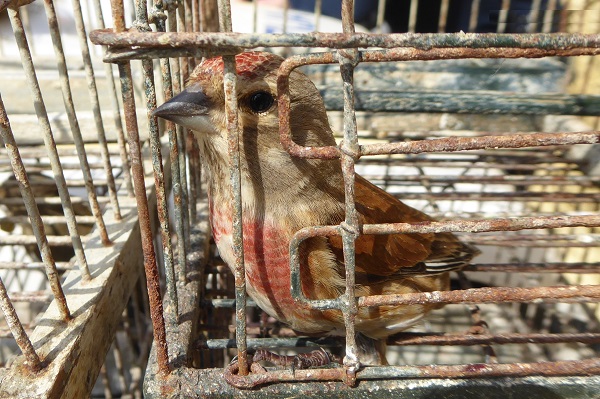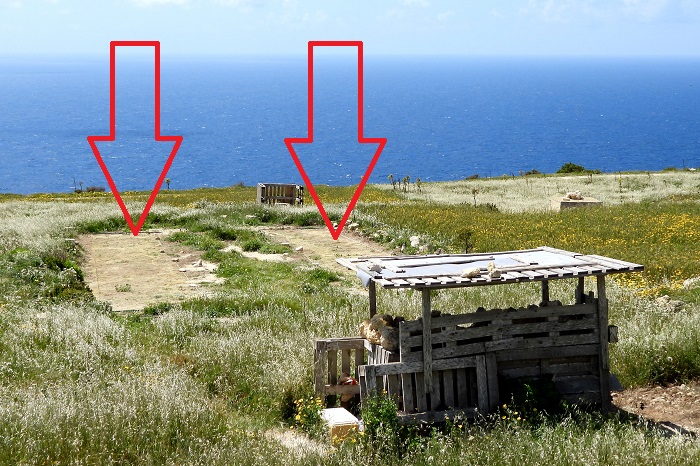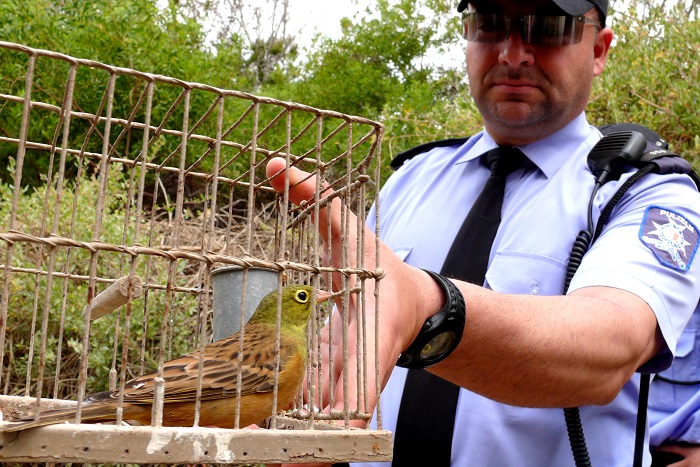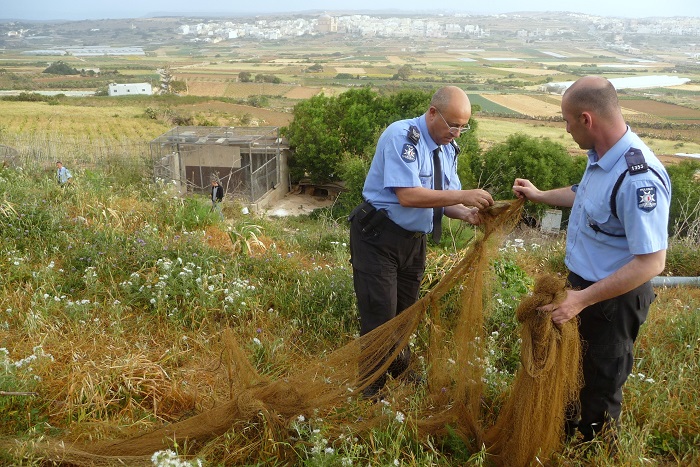Finch trapping on Malta

Finches such as linnets, hawfinches, siskins, chaffinches and greenfinches are popular cage birds in Malta. Until the beginning of the new millennium, finch trapping with clap-nets was permitted on a regular basis every spring and autumn. With the accession to the EU in 2004, the bird trapping ban set in as the EU Birds Directive had to be transposed into national law. The country was granted a transitional period of three years. During this period - according to the Accession Treaty - Malta was to set up a breeding scheme to make finch trapping redundant. Brussels overlooked two points: The Maltese do not like to be pulled from their traditions, and bird-trapping is not primarily about cage and aviary, but about activity as such. Hence why, contrary to EU law, Malta has allowed the trapping continue until 2017. Since then, finch trapping has been banned - however that does not mean that it has ceased happening!
On Malta there are around 6,000 trapping places. Half of the land area is occupied by cities - on the remaining area there is on average around 25 bird trapping sites per square kilometre. When all the facilities are in operation, the area of the nets, at around 80 hectares, is larger than that of Malta's capital, Valletta.

Around 5,000 of the sites are used to catch finches, the rest to catch decoy birds such as - quite legally - golden plovers and song thrushes or - illegally - quails and turtle dove. Each site consists of a flat rectangular area for the two nets, which lie parallel to each other on the ground and are held under tension with large metal springs. In their middle there is food and water, and live decoys are placed around the site. When birds settle in the space between the nets, the bird trapper waiting in a nearby stone hut triggers them. The nets then spring over the birds and catch them alive.
In addition to the use of live decoys, which are usually confined to tiny cages, the use of electronic decoys is now widespread. They "sing" more reliably than their feathered role models, are cheaper to buy, need neither food nor water and are therefore a far more effective lure than live birds. For this reason, they are banned, while live decoys were allowed until the finches were banned.

Finches are the main target of the trappers, but not the only one. Malta's iconic bird - the Blue Rock Thrush - is also caught, as is the Ortolan bunting, which is threatened with extinction throughout Europe. Also Short-toed Larks and Red-throated Pipits are sought after. Trapping of these species was illegal in Malta even before accession to the EU.
All finch species are protected in the EU. Derogations, to authorise regional trapping under the guise of preserving tradition, are subject to strict conditions. Only when there is no other satisfactory solution for the trapping. Since finches can be easily bred, it should not be possible to allow them to be caught. Nevertheless, after the end of the transitional period in 2007, Malta allowed finch trapping again in autumn and only gave in to the constant pressure from nature conservation associations and Brussels in 2018.
Many bird trappers did not comply with the law even before the final finch trapping ban and either laid out their nets in spring or used electronic decoy callers.
In spite of rulings from the European Court of Justice, in 2020 and yet again in 2021 and 2022, the Malta Government ignored fresh warnings from the European Commission and announced a trapping season for finches under the guise of ‘research project’. With the excuse that they will be carrying out a scientific study, trappers are once again permitted to trap Greenfinch, Goldfinch, Hawfinch, Chaffinch, Serin, Linnet and Siskin between 20th October and 20th December both days included. Trappers are expected to release the birds as soon as they catch them, after recording details of birds carrying a ring, recording biometrics and submitting the information to the Wild Bird Regulation Unit (WBRU). In 2022, a total of 2,635 trapping sites were authorised to trap under the finch ‘research project’.

Bird-trapping in Malta is a highly political issue. Hunters, trappers and their families are often the tip of the iceberg in elections; and lavish election promises to the traditionalists are part of the fixed ritual before every ballot. It is therefore hardly surprising that there is little political will to take consistent action against poaching with nets. Police controls are rare and court decisions against the few convicted bird trappers are usually at the bottom of the penalty line.
And there is another factor that promotes illegal finch trapping: while finches are protected throughout the EU, song thrushes and golden plovers are huntable species. For these species, the requirements of a derogation are far less complicated. Malta has allowed the capture of song thrushes and golden plovers with nets in autumn. The primary objective is to use the captured birds as live decoys for hunting. However, a side effect of these trapping derogations is that they lead to considerable confusion in the field. It is often difficult to determine which trapping sites are legal and which are illegal.
The Committee Against Bird Slaughter (CABS) has now been working against finch trapping in Malta for two decades. With our research and lobbying in Brussels, we contributed to the fact that the trapping was initially restricted and finally banned. At our bird protection camps, we monitor compliance with the law and bring poachers to justice.






